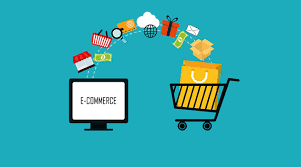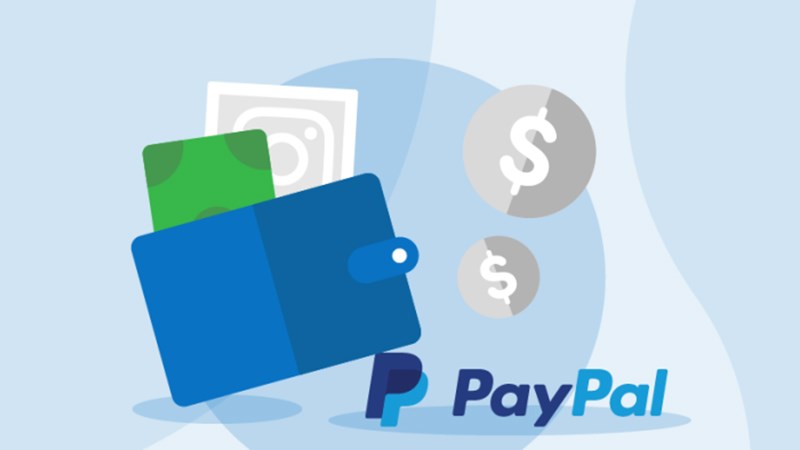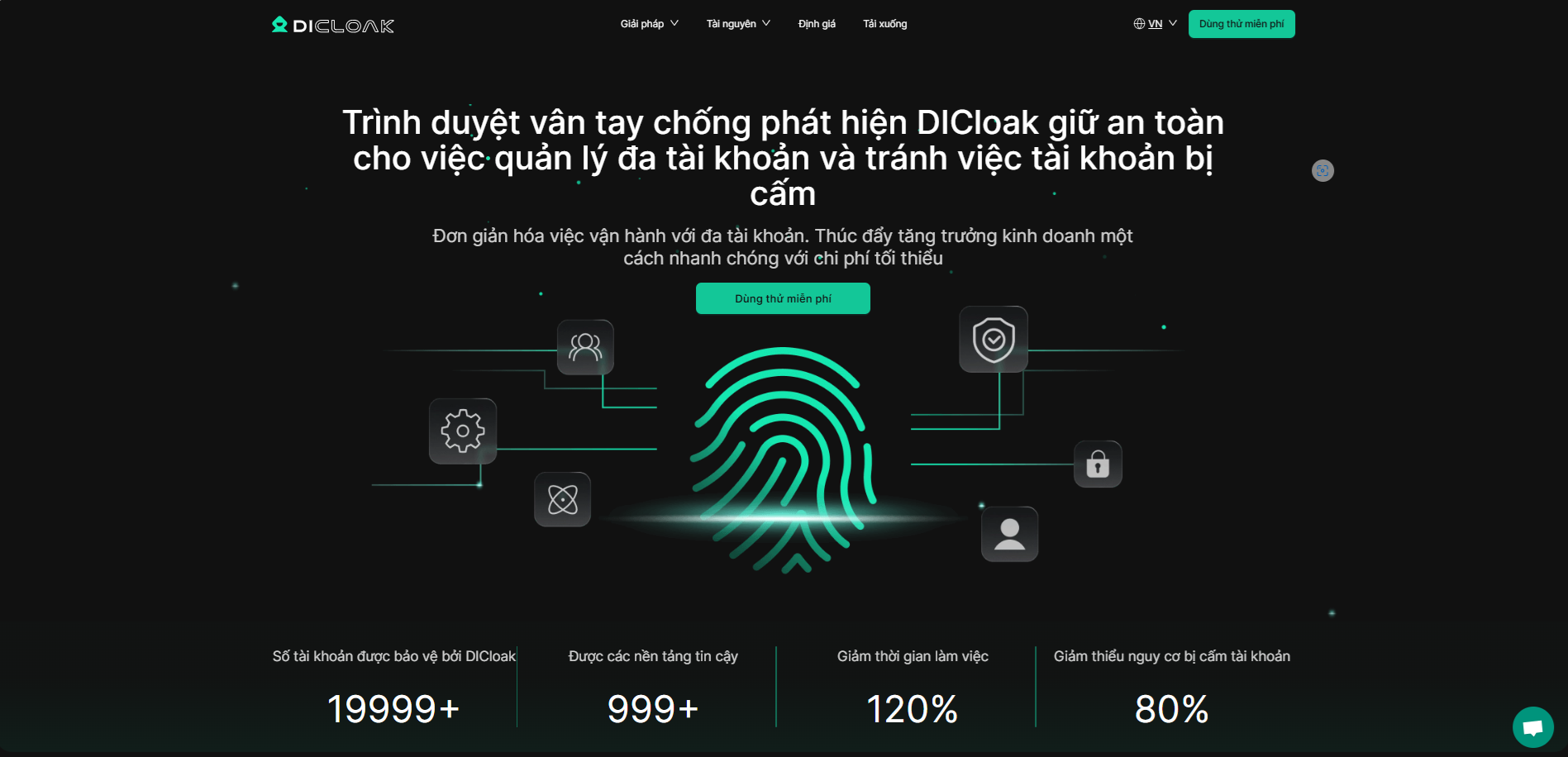In the context of rapidly evolving e-commerce, owning and managing multiple PayPal accounts can be of significant benefit. Especially for those who run multiple brands or products, having a separate PayPal account for each product line will help minimize the risk of interruption if one account is suspended.
However, PayPal has a policy of limiting the number of regular accounts. This means the need to use "stealth accounts" to stay safe and avoid detection by PayPal's systems. This article will show you how to create and manage multiple PayPal accounts in detail and efficiently.
What is a PayPal account?
A PayPal account is a globally popular online payment account that allows users to send, receive, and make transactions quickly and securely over the internet. Founded in 1998, PayPal has become one of the world's largest e-payment platforms, providing convenient payment solutions for individuals and businesses across multiple e-commerce platforms such as eBay, Amazon, and Shopify.
Reasons to need multiple PayPal accounts
1.Financial Segregation and Effective Cash Flow Management
- Strengthen financial management: When there are multiple product lines, brands, or businesses, using a single account can make it difficult to track the cash flow of each category. Each separate PayPal account will help businesses easily distinguish revenue and expenses by product line, thereby managing finances clearly and accurately.
- Ensuring Accurate Profits: With a separate account, you can track the actual profit for each business independently, helping to make the right financial and investment decisions based on the actual performance of each product or brand.
- Convenience in financial reporting:When there are segregated accounts, it is simpler to create financial reports because there is no need to filter data from a joint account. This helps to optimize the accounting process and minimize confusion in profit reports.

2.Mitigate the risk of account suspension
- Business Protection:PayPal may suspend your account at any time if it detects signs of unusual transactions, policy violations, or technical errors that disrupt your cash flow and services. With many accounts, businesses will have a backup plan to transfer transactions to other accounts, ensuring that operations are not stopped.
- Avoid chain effects:If you only have one account and it is frozen, the entire business can be severely affected. Using multiple separate accounts helps prevent this risk, minimizing the risk of PayPal detecting links between accounts and suspending multiple accounts simultaneously.
- Rapid recovery of operations:If one account has a problem, businesses can immediately resume business with other accounts, avoiding losing customers or losing credibility due to service interruptions.
3.Optimize payments across multiple sales channels
- Multi-channel sales support:For businesses that operate on multiple platforms (such as Amazon, eBay, or their own e-commerce websites), having a separate PayPal account for each sales channel helps synchronize payments, minimize confusion when reconciling and managing transactions from multiple sources.
- IPN (Instant Payment Notification) optimization:PayPal's IPN feature provides automatic transaction notifications for each account. However, each PayPal account only supports a single IPN URL, so if you have multiple websites, having a separate account for each site will help sync the automatic checkout process, support smooth transactions, and avoid IPN errors affecting the entire system.
- Enhance the customer experience:Using a separate PayPal account for each channel or brand creates a more professional and clear checkout experience, making it easier for customers to identify the brand and have peace of mind when transacting online.

Steps to create and manage multiple PayPal accounts securely
Step 1: Prepare personal information
PayPal often detects accounts linked to each other based on duplicate information such as names, addresses, phone numbers, or emails. To avoid detection, you need to prepare separate personal information for each account:
1. Create unique personal information for each account:
- Name, address, and phone number:Make sure that each account has a different name, address, and phone number. You can use reasonable false information with personal information generation tools such as Fake Name Generator or FauxID. These tools help in creating fake user profiles but look very realistic.
- Email:Each account needs a different email address, preferably from different email providers to avoid suspicion. For example, you can use Gmail for one account, Yahoo for another, and Outlook for the next.

2. Storage and management of personal information:
- Create a tracking board:To avoid confusion and be easy to manage, it's a good idea to store all of this information in a spreadsheet or password management software (like LastPass, 1Password) so that you can keep track of each account in a secure and organized way.
- Avoid duplicate information:Make sure that each account is a completely separate entity, not sharing any information with other accounts. Duplicate information can easily cause PayPal to detect a link between accounts, resulting in your account being restricted.
Step 2: Use Different IP Addresses
PayPal tracks IP addresses to verify identity and detect suspicious activity. Using the same IP address for multiple accounts will make PayPal suspect that these accounts belong to the same person.
1. Use a Proxy or VPN:
- Choosing a Reputable Proxy:Residential proxies help provide IP addresses from actual residential areas, which look like IP addresses from normal users rather than from data centers. Reputable residential proxy providers such as Luminati, Smartproxy, or ProxyEmpire can be a safe option to help each account have a unique IP address.
- Use a high-quality VPN:If you don't use a proxy, you can opt for a premium VPN like NordVPN or ExpressVPN, which is capable of providing a fixed IP address. This makes each login from a different IP address, avoiding detection.
2. Set up a secure access configuration:
- Don't share IPs between accounts:Each account must use an independent IP address to prevent PayPal's system from detecting suspicious activity. Make sure no account is logging in from the same IP.
- Switch IP carefully:Avoid logging in at the same time or too often on the same IP for different accounts. This can cause the system to identify abnormalities and check account activity.
Step 3: Use a multi-profile browser
Besides IP checking, PayPal also uses cookies and browser fingerprints to track users. These factors help PayPal detect when a person intentionally creates multiple accounts by recognizing repetitive behavior in the browser.
1. Use multi-profile browser software:
- Use DICloak:DICloakare tools that allow you to create multiple browser profiles with separate configurations, including different cookies and fingerprints for each profile. This helps PayPal think that each account is accessed from different browsers and devices.
- Set up a separate browsing profile:Each browser profile can customize information such as operating system, device type, and screen resolution, thereby creating different browser fingerprints. This is a way to make accounts look like they're being operated from different devices and locations.


2. Clear cookies and cache regularly:
- Browser Data Cleanup:Cleaning up cookies and cache on each browser profile helps avoid leaving traces that can connect accounts to each other. Use tools like CCleaner to clean your browser data regularly.
- Restrict sign-in on the same device:Try to avoid logging in to multiple PayPal accounts on the same device or browser profile, as cookies and browser fingerprints can cause PayPal to detect correlations between accounts.
Notes on managing multiple PayPal accounts
- Ensure compliance with PayPal's policies:While it can be helpful to have multiple accounts, PayPal discourages and may ban an account if it detects any suspicious activity.
- Monitor and manage information carefully:Store each account's information carefully and make sure there aren't any duplicates. You can use a spreadsheet or password manager software to organize your information securely.
- Respect the security process:Protecting personal information and adhering to security measures is key to reducing the risk of accounts being blocked or suspended.
Frequently Asked Questions About Creating a PayPal Account:
1. Can I create multiple PayPal accounts?
According to PayPal's policy, each individual is allowed to have a maximum of one personal account and one business account. If you need more accounts, you need to set up separate accounts with different personal information and IPs to avoid detection and restrictions.
2. How do I avoid being suspended by PayPal when I have multiple accounts?
To avoid being detected by PayPal, each account should have different personal information, email, IP address, and login device. The use of browser profile management tools such as AdsPower or Multilogin and reliable proxies also helps to avoid risks.
3. My PayPal account is suspended due to an error, how do I recover it?
If your account is suspended, you will need to contact PayPal support, provide identity verification documents and relevant information for PayPal to review and be able to reopen your account for you.
4. Can I use the same phone number or email address for multiple PayPal accounts?
No, each PayPal account needs a different phone number and email address. Using duplicate information may result in your account being restricted or suspended.
5. How can I make sure my PayPal transactions are secure?
Make sure to use strong passwords, enable two-factor authentication (2FA), regularly check transactions for unusual activity, and avoid logging into accounts on unsecured public networks.